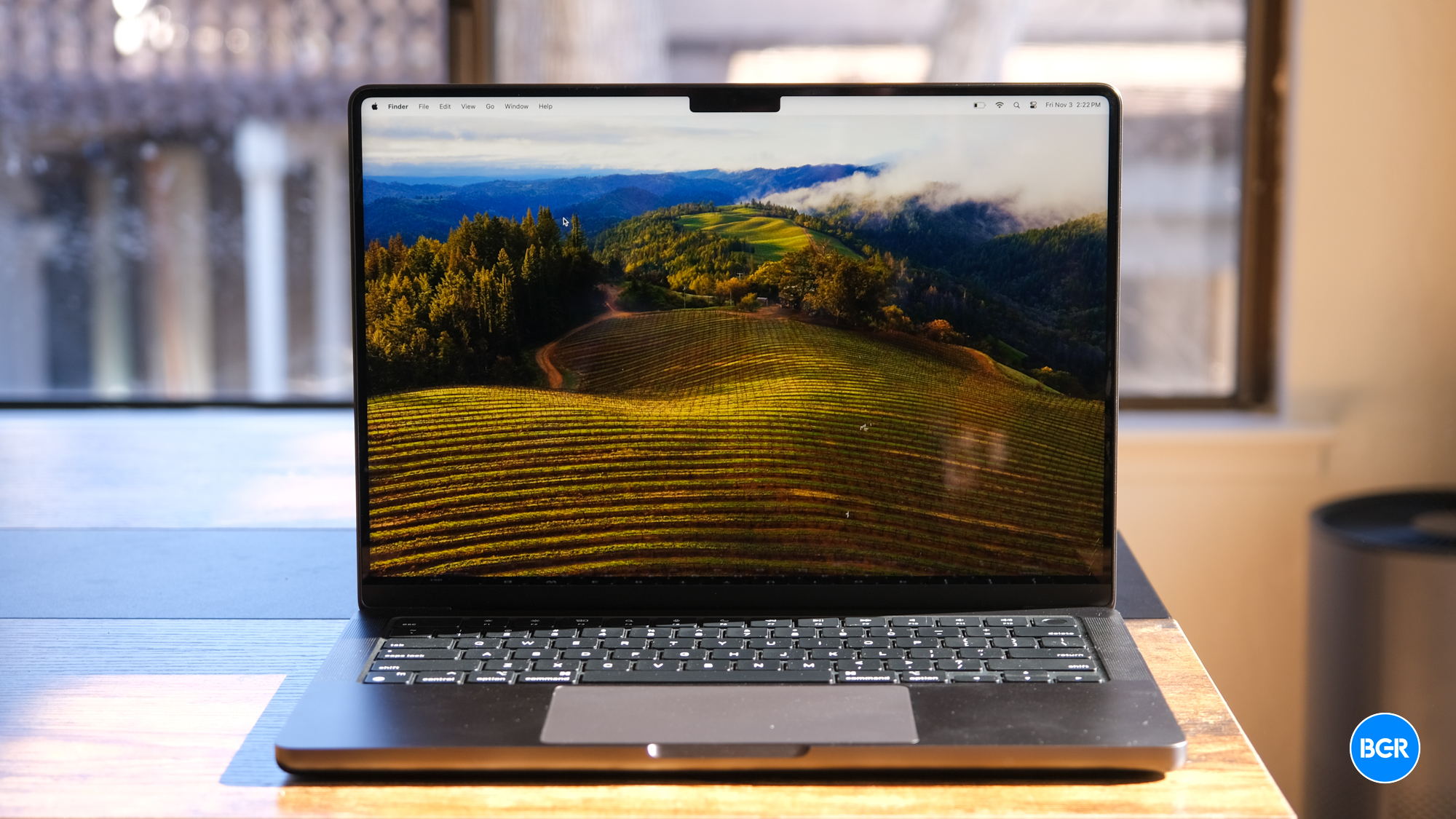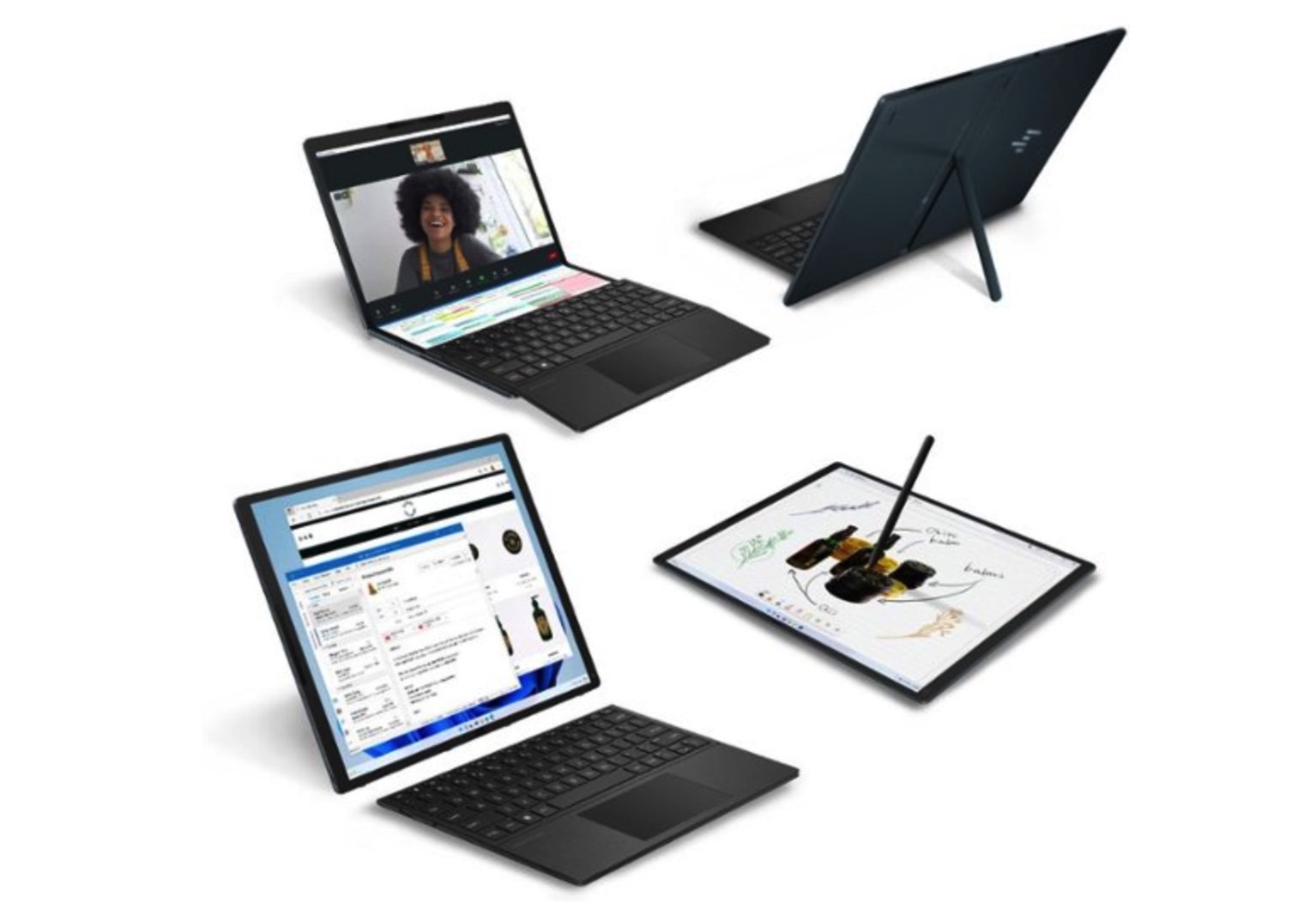Apple just launched its first tablet with OLED displays, the M4 iPad Pro, which comes in two sizes. That innovation will pave the way for the first MacBooks with OLED screens. The laptops have appeared in several reports in recent years. Some say the first MacBook Pros with OLED panels might launch in 2026. Others claim OLED MacBooks might not be ready until the following year.
The good news is that there’s been a big development recently in the world of Apple rumors. Two different insiders now claim that Apple is working on a foldable MacBook. The development phase is far enough along that we have some display specs details for the laptop, as well as price estimates for some components.
These foldable MacBook rumors cast all the OLED MacBook Pro reports in a different light. That’s because every foldable device has to have an OLED panel. Apple could release regular OLED MacBook Pros at the same time as a foldable MacBook with an OLED screen. Another possibility is that the foldable laptop would be Apple’s first MacBook with a foldable display.
Research firm Omdia released a report this week that says Apple will eventually equip the iPad Air and iPad mini with OLED panels now that the iPad Pro has them. We already have rumors that the smallest iPad might get an OLED panel in the coming years.
More interestingly, the firm predicts Apple might release its first MacBook Pro with an OLED screen in 2026:
According to Ricky Park, Senior Principal Analyst in Omdia’s Display research practice, “Apple is highly likely to incorporate OLED into its MacBook Pro models as early as 2026. This move could spark a significant surge in OLED demand within the notebook market, potentially reaching over 60 million units by 2031.”
Little information is given beyond that prediction. Omdia says some of the world’s biggest display manufacturers are already preparing for increased demand for tablet and laptop-sized OLED screens. The firm mentions Samsung Display, BOE, and Visionx among the companies investing in new facilities that could handle mass production in 2026 and 2027.

Also, let’s remember LG Display is one of the big winners of Apple’s OLED panel supply chain for the M4 iPad Pro. Once Apple is ready, LG would likely want a piece of the OLED MacBook Pro action.
Back to the foldable MacBook, well-known Apple analyst Ming-Chi Kuo mentioned LG as the exclusive partner for crease-less screens that Apple wants for the device:
LGD (panel) and Amphenol (hinge) are currently Apple’s exclusive development partners: A high level of integration between the panel and hinge is required to address the crease issue. LGD and Amphenol are the exclusive development partners for the panel and the hinge, respectively. Based on experience, Apple typically collaborates with only one manufacturer to focus resources on overcoming the manufacturing challenges posed by innovative designs. For example, the iPhone 15 Pro Max’s tetraprism (periscope) camera was developed in partnership with LGIT (module) and Largan (lens).
Kuo also offered estimates for the manufacturing costs:
Apple aims to make the panel as crease-free as possible, requiring high design specifications for both the panel and the hinge. As a result, the cost of the panel and hinge is very high. Current preliminary estimates put the panel and hinge costs at around $600–650 and $200–250, respectively. If production yields improve significantly by the time of mass production, these costs could decrease.
The OLED panels in the iPad Pro are also expensive. Rumors say they’re responsible for the price hike the tablet got this year. They’re also unlike anything else in the industry.
Apple’s Tandem OLED panels are incredibly thin but offer screen improvements that aren’t available from traditional OLED panels of this size. They deliver increased brightness, better efficiency, and longer life than OLED screens with a single layer of OLEDs.
According to reports that preceded the iPad Pro launch, Tandem OLED panels are also more difficult to manufacture. Samsung and LG are both part of the OLED panel supply chain for the new tablets.

What I’m getting at is that Apple has been laying the groundwork for the future of computing. It’s been working with Samsung and LG to create slimmer OLED panels that are better than any current alternatives. Versions of these panels will probably be used in future MacBooks, whether they’re traditional laptops or foldable ones.
Predictions like Omdia’s are probably an accurate depiction of the state of the industry. Vendors competing against Apple’s Macs and iPads will surely want to use similar OLED tech in high-end devices.
Therefore, I’m convinced we’ll see MacBook Pro laptops with OLED panels hit stores in the near future. I think Apple will want to bring OLED screens to regular MacBook Pros and foldable ones at the same time. But if that isn’t feasible from a cost perspective, I can see a staggered launch. It’ll be interesting to see which comes first, the OLED foldable MacBook (Pro?) or the regular OLED MacBook Pro.



